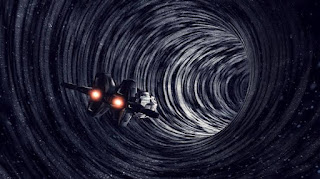The universe is an incredibly vast and complex place, full of mysteries waiting to be https://www.highrevenuegate.com/zueqcpn5?key=836a250026d977a381c450c50171e566 uncovered. Among these mysteries, perhaps none is more intriguing and perplexing than dark matter. This enigmatic substance, which is thought to make up the vast majority of the matter in the universe, has never been directly observed or detected. Despite decades of research, scientists still do not fully understand what dark matter is or how it works. In this article, we will delve into the dark matter mystery, exploring what we know, what we don't know, and what we hope to learn in the future.What is Dark Matter?
First discovered in the 1930s, dark matter is a form of matter that does not emit, absorb, or reflect light or any other form of electromagnetic radiation. Because of this, it cannot be detected by telescopes or any other traditional means of observation. However, scientists have been able to infer its existence by observing its gravitational effects on visible matter. For example, galaxies rotate much faster than they should be able to based on the amount of visible matter they contain. This suggests that there is more matter in the galaxy than we can see, and that this invisible matter is what is causing the increased rotation speed. This invisible matter is believed to be dark matter.
What is Dark Matter Made of?
While we know that dark matter exists, we still do not know what it is made of. It is called "dark" because it does not interact with light or any other form of electromagnetic radiation, which means that it cannot be observed directly. The most widely accepted theory is that dark matter is made up of some kind of particle that interacts very weakly with other matter. These particles are thought to be different from the particles that make up ordinary matter, such as protons and electrons. They are also thought to be much more massive than these particles, which is why they are able to exert such a strong gravitational pull.
One candidate for dark matter particles is the WIMP (Weakly Interacting Massive Particle). WIMPs are hypothetical particles that were first proposed in the 1970s. They are thought to be electrically neutral and interact very weakly with other matter, which makes them very difficult to detect. Other possible candidates include axions, sterile neutrinos, and gravitinos. However, none of these particles have been detected yet, and scientists are still searching for evidence of their existence.
The Search for Dark MatterDespite the lack of direct evidence, scientists are confident that dark matter exists. They have observed its effects on the behavior of galaxies, galaxy clusters, and even the entire universe. However, they still do not know what it is or how it works. This has led to a decades-long search for dark matter, using a variety of methods and technologies.
One approach is to look for evidence of dark matter particles colliding with ordinary matter. When this happens, it should produce a burst of energy that could be detected by sensitive instruments. Experiments such as the Large Hadron Collider (LHC) in Switzerland and the Cryogenic Dark Matter Search (CDMS) in the United States are attempting to detect dark matter particles in this way.
Another approach is to look for evidence of dark matter annihilation. When dark matter particles collide with each other, they should annihilate each other, producing a burst of high-energy radiation. This radiation could be detected by telescopes or other instruments. The Fermi Gamma-ray Space Telescope is currently searching for evidence of dark matter annihilation.
The Future of Dark Matter Research
The search for dark matter is ongoing, and scientists are continuing to develop new technologies and techniques to try to detect it. One exciting possibility is the use of gravitational waves to detect dark matter. Gravitational waves are




Comments
Post a Comment